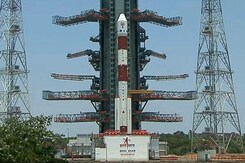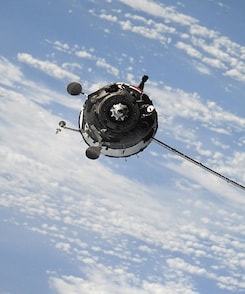Space Scientists
- All
- News
- Videos
- Web Stories
-

Iran’s Folded Rocks Reveal Ancient Tectonic Power at Asia-Europe Boundary
- Monday April 21, 2025
- Written by Gadgets 360 Staff
Iran’s Zagros Mountains showcase tightly folded rock layers caused by the slow-motion collision of the Arabian and Eurasian plates. Visible from space, these dramatic geological structures reveal the raw power of continental tectonics and provide scientists with valuable insights into mountain formation, seismic activity, and Earth’s ongoing st...
-
 www.gadgets360.com
www.gadgets360.com
-

Hydrogen Gas Cloud Might Help Solve the Mystery of Missing Non-Dark Matter of the Universe
- Saturday April 19, 2025
- Written by Gadgets 360 Staff
Ionized Hydrogen gas cloud is believed to have the missing matter of the universe, said scientists. This discovery, conducted by DESI, changed the perspective of black hole theory and is believed to switch on and off at its duty cycle. The scientists will further use new measurements in the existing models of the Universe.
-
 www.gadgets360.com
www.gadgets360.com
-

Lyrid Meteor Shower 2025 to Fill the Night Sky Soon: Know When to Watch
- Saturday April 19, 2025
- Written by Gadgets 360 Staff
The spectacular and glittery meteor Lyrid can be observed with the naked eye. The scientists reported a familiar incident that happened around 2700 years ago. You can see the meteors up to 15 to 20 meters streaking the sky. Watch this breathtaking view in the rural region where park, beach or mountain trails.
-
 www.gadgets360.com
www.gadgets360.com
-

NASA Scientists Study Crystal Formation in Space For Future Applications
- Saturday April 19, 2025
- Written by Gadgets 360 Staff
NASA said that the crystals formed in space are of improved quality than those on Earth due to the microgravity impact.
-
 www.gadgets360.com
www.gadgets360.com
-

Hidden Solar Cycle Could Reshape Space Weather for the Next 50 Years, Finds Study
- Saturday April 19, 2025
- Written by Gadgets 360 Staff
A hidden solar cycle is emerging, potentially intensifying space weather events over the next 50 years. While this cycle may raise concerns about geomagnetic storms and satellite disruptions, scientists believe it could also offer valuable opportunities to advance space weather forecasting, study Earth's magnetic field, and improve our resilience t...
-
 www.gadgets360.com
www.gadgets360.com
-

Watch: Missing Half Of Universe's Visible Matter Found Hiding In Intergalactic Space
- Friday April 18, 2025
- Science | Edited by Nikhil Pandey
Scientists have located the missing half of the Universe's visible matter as vast clouds of ionized hydrogen in intergalactic space, confirming it through novel techniques and survey programs showing the material is further from galactic cores than p
-
 www.ndtv.com
www.ndtv.com
-

Scientists Find Strongest Evidence Yet Of Life On An Alien Planet
- Thursday April 17, 2025
- Science | Reuters
In a potential landmark discovery, scientists using the James Webb Space Telescope have obtained what they call the strongest signs yet of possible life beyond our solar system, detecting in an alien planet's atmosphere.
-
 www.ndtv.com
www.ndtv.com
-

NASA’s Hubble Space Telescope Tracks a Neutron Star With Mysterious Origin
- Wednesday April 16, 2025
- Written by Gadgets 360 Staff
NASA’s Hubble Space Telescope spotted a rogue magnetar, dubbed SGR 0501+4516, traversing our galaxy for a significantly long time. As per claims by scientists, it was first discovered in the year 2008 by NASA's Swift Observatory as intense flashes of gamma rays in the outer area of the Milky Way
-
 www.gadgets360.com
www.gadgets360.com
-

Solar Storm Possibility Rises After NOAA Predicts Double CME Strike on Earth
- Wednesday April 16, 2025
- Written by Gadgets 360 Staff
Two massive solar blasts are expected to hit Earth, creating geomagnetic storms that could result in rare aurora sightings in regions far from the poles. Scientists say this is part of an increasingly active solar cycle.
-
 www.gadgets360.com
www.gadgets360.com
-

All-Female Spaceflight with Katy Perry and Others Came to Earth Successfully
- Wednesday April 16, 2025
- Written by Gadgets 360 Staff
Katy Perry and Gayle King have completed the all-female space mission. The onboard members were Katy Perry, the famous pop star singer; Gayle King, co-host of the CBS Morning Show; Aisha Bowe, NASA Rocket Scientist; Kerianne Flynn, film producer; Amanda Nguyen, the civil rights activist; and Lauren Sánchez, journalist
-
 www.gadgets360.com
www.gadgets360.com
-

Scientists Discover New Sub-Neptune Exoplanet Using Radial Velocity Detection Technique
- Tuesday April 15, 2025
- Written by Gadgets 360 Staff
A team of international astronomers has identified a new sub-Neptune exoplanet that has been orbiting the star called GI 410. This has been a magnificent discovery in the area of science. This newly detected sub-Neptune exoplanet weighs approximately 8.5 Earth masses. The discovery was commenced by the use of the Radial Method, the technique that h...
-
 www.gadgets360.com
www.gadgets360.com
-

NASA Shares Planetary Defense Strategy to Protect Earth From Potential Asteroid Strikes
- Tuesday April 15, 2025
- Written by Gadgets 360 Staff
NASA and international scientists closely tracked asteroid 2024 YR4, which initially showed a rare 3 percent collision probability with Earth. Although the threat has now diminished, the incident highlights the importance of asteroid surveillance, open data, and upcoming space missions like NEO Surveyor.
-
 www.gadgets360.com
www.gadgets360.com
-

Our Neighbouring Galaxy Is Being Torn Apart, Scientists Make Shocking Discovery
- Friday April 11, 2025
- Science | Edited by Abhinav Singh
Scientists made the claim after analysing the data collected by the European Space Agency's recently retired Gaia spacecraft.
-
 www.ndtv.com
www.ndtv.com
-

"Crash Icy Asteroids Into Mars": Scientist's Plan To Make Mars Liveable For Humans
- Wednesday April 9, 2025
- Science | Edited by Nikhil Pandey
Dr Leszek Czechowski proposes a radical approach to terraform Mars by crashing asteroids into the planet.
-
 www.ndtv.com
www.ndtv.com
-

NASA’s SPHEREx Mission Sends First Space Images Before Full Sky Survey
- Thursday April 3, 2025
- Written by Gadgets 360 Staff
NASA’s SPHEREx telescope has captured its first images from space, marking a critical milestone before its full-sky infrared survey begins. The observatory, launched on March 11, recorded thousands of light sources, including distant galaxies and stars. Unlike other space telescopes, SPHEREx is designed for large-scale cosmic mapping, scanning th...
-
 www.gadgets360.com
www.gadgets360.com
-

Iran’s Folded Rocks Reveal Ancient Tectonic Power at Asia-Europe Boundary
- Monday April 21, 2025
- Written by Gadgets 360 Staff
Iran’s Zagros Mountains showcase tightly folded rock layers caused by the slow-motion collision of the Arabian and Eurasian plates. Visible from space, these dramatic geological structures reveal the raw power of continental tectonics and provide scientists with valuable insights into mountain formation, seismic activity, and Earth’s ongoing st...
-
 www.gadgets360.com
www.gadgets360.com
-

Hydrogen Gas Cloud Might Help Solve the Mystery of Missing Non-Dark Matter of the Universe
- Saturday April 19, 2025
- Written by Gadgets 360 Staff
Ionized Hydrogen gas cloud is believed to have the missing matter of the universe, said scientists. This discovery, conducted by DESI, changed the perspective of black hole theory and is believed to switch on and off at its duty cycle. The scientists will further use new measurements in the existing models of the Universe.
-
 www.gadgets360.com
www.gadgets360.com
-

Lyrid Meteor Shower 2025 to Fill the Night Sky Soon: Know When to Watch
- Saturday April 19, 2025
- Written by Gadgets 360 Staff
The spectacular and glittery meteor Lyrid can be observed with the naked eye. The scientists reported a familiar incident that happened around 2700 years ago. You can see the meteors up to 15 to 20 meters streaking the sky. Watch this breathtaking view in the rural region where park, beach or mountain trails.
-
 www.gadgets360.com
www.gadgets360.com
-

NASA Scientists Study Crystal Formation in Space For Future Applications
- Saturday April 19, 2025
- Written by Gadgets 360 Staff
NASA said that the crystals formed in space are of improved quality than those on Earth due to the microgravity impact.
-
 www.gadgets360.com
www.gadgets360.com
-

Hidden Solar Cycle Could Reshape Space Weather for the Next 50 Years, Finds Study
- Saturday April 19, 2025
- Written by Gadgets 360 Staff
A hidden solar cycle is emerging, potentially intensifying space weather events over the next 50 years. While this cycle may raise concerns about geomagnetic storms and satellite disruptions, scientists believe it could also offer valuable opportunities to advance space weather forecasting, study Earth's magnetic field, and improve our resilience t...
-
 www.gadgets360.com
www.gadgets360.com
-

Watch: Missing Half Of Universe's Visible Matter Found Hiding In Intergalactic Space
- Friday April 18, 2025
- Science | Edited by Nikhil Pandey
Scientists have located the missing half of the Universe's visible matter as vast clouds of ionized hydrogen in intergalactic space, confirming it through novel techniques and survey programs showing the material is further from galactic cores than p
-
 www.ndtv.com
www.ndtv.com
-

Scientists Find Strongest Evidence Yet Of Life On An Alien Planet
- Thursday April 17, 2025
- Science | Reuters
In a potential landmark discovery, scientists using the James Webb Space Telescope have obtained what they call the strongest signs yet of possible life beyond our solar system, detecting in an alien planet's atmosphere.
-
 www.ndtv.com
www.ndtv.com
-

NASA’s Hubble Space Telescope Tracks a Neutron Star With Mysterious Origin
- Wednesday April 16, 2025
- Written by Gadgets 360 Staff
NASA’s Hubble Space Telescope spotted a rogue magnetar, dubbed SGR 0501+4516, traversing our galaxy for a significantly long time. As per claims by scientists, it was first discovered in the year 2008 by NASA's Swift Observatory as intense flashes of gamma rays in the outer area of the Milky Way
-
 www.gadgets360.com
www.gadgets360.com
-

Solar Storm Possibility Rises After NOAA Predicts Double CME Strike on Earth
- Wednesday April 16, 2025
- Written by Gadgets 360 Staff
Two massive solar blasts are expected to hit Earth, creating geomagnetic storms that could result in rare aurora sightings in regions far from the poles. Scientists say this is part of an increasingly active solar cycle.
-
 www.gadgets360.com
www.gadgets360.com
-

All-Female Spaceflight with Katy Perry and Others Came to Earth Successfully
- Wednesday April 16, 2025
- Written by Gadgets 360 Staff
Katy Perry and Gayle King have completed the all-female space mission. The onboard members were Katy Perry, the famous pop star singer; Gayle King, co-host of the CBS Morning Show; Aisha Bowe, NASA Rocket Scientist; Kerianne Flynn, film producer; Amanda Nguyen, the civil rights activist; and Lauren Sánchez, journalist
-
 www.gadgets360.com
www.gadgets360.com
-

Scientists Discover New Sub-Neptune Exoplanet Using Radial Velocity Detection Technique
- Tuesday April 15, 2025
- Written by Gadgets 360 Staff
A team of international astronomers has identified a new sub-Neptune exoplanet that has been orbiting the star called GI 410. This has been a magnificent discovery in the area of science. This newly detected sub-Neptune exoplanet weighs approximately 8.5 Earth masses. The discovery was commenced by the use of the Radial Method, the technique that h...
-
 www.gadgets360.com
www.gadgets360.com
-

NASA Shares Planetary Defense Strategy to Protect Earth From Potential Asteroid Strikes
- Tuesday April 15, 2025
- Written by Gadgets 360 Staff
NASA and international scientists closely tracked asteroid 2024 YR4, which initially showed a rare 3 percent collision probability with Earth. Although the threat has now diminished, the incident highlights the importance of asteroid surveillance, open data, and upcoming space missions like NEO Surveyor.
-
 www.gadgets360.com
www.gadgets360.com
-

Our Neighbouring Galaxy Is Being Torn Apart, Scientists Make Shocking Discovery
- Friday April 11, 2025
- Science | Edited by Abhinav Singh
Scientists made the claim after analysing the data collected by the European Space Agency's recently retired Gaia spacecraft.
-
 www.ndtv.com
www.ndtv.com
-

"Crash Icy Asteroids Into Mars": Scientist's Plan To Make Mars Liveable For Humans
- Wednesday April 9, 2025
- Science | Edited by Nikhil Pandey
Dr Leszek Czechowski proposes a radical approach to terraform Mars by crashing asteroids into the planet.
-
 www.ndtv.com
www.ndtv.com
-

NASA’s SPHEREx Mission Sends First Space Images Before Full Sky Survey
- Thursday April 3, 2025
- Written by Gadgets 360 Staff
NASA’s SPHEREx telescope has captured its first images from space, marking a critical milestone before its full-sky infrared survey begins. The observatory, launched on March 11, recorded thousands of light sources, including distant galaxies and stars. Unlike other space telescopes, SPHEREx is designed for large-scale cosmic mapping, scanning th...
-
 www.gadgets360.com
www.gadgets360.com

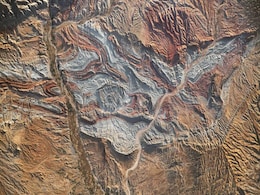
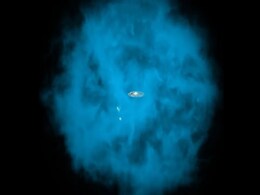
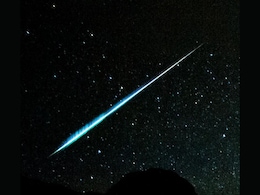





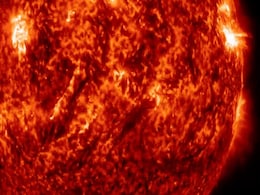
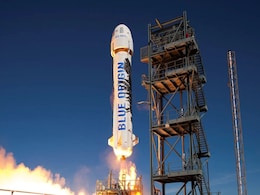
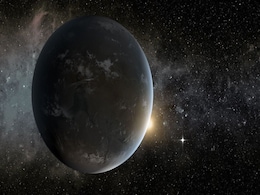
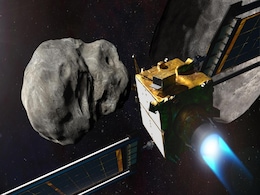

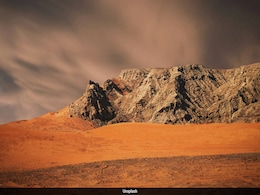




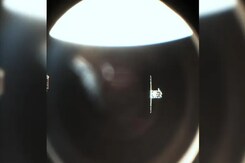


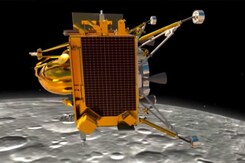
![Gadgets 360 With Technical Guruji: Did You Know? [April 6, 2024] Gadgets 360 With Technical Guruji: Did You Know? [April 6, 2024]](https://c.ndtvimg.com/2024-02/mpconh58_did-you-know_640x480_10_February_24.jpg?downsize=245:163)



